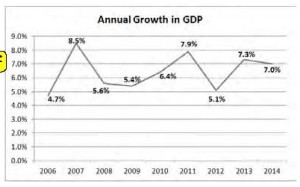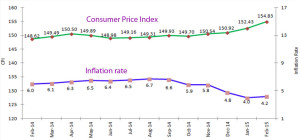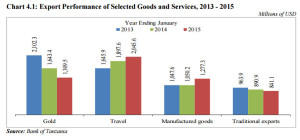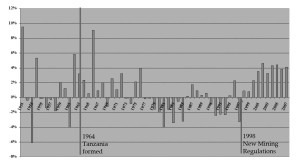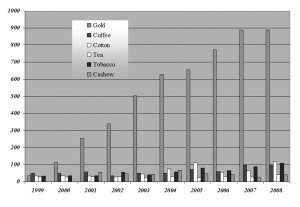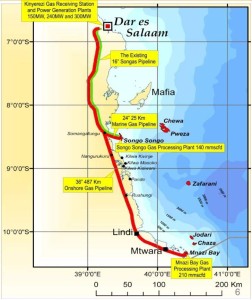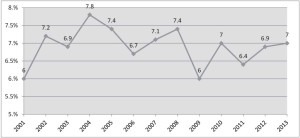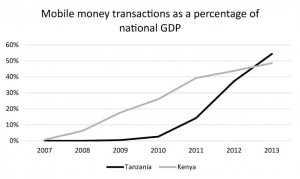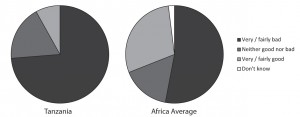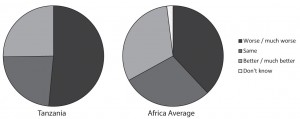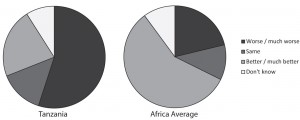by Ben Taylor
Stabilised shilling, but at a price
The decline in value of the Tanzanian shilling against the US dollar has been halted, with the shilling now stable at around TSh 2,150 to the dollar since the end of September. Previously, the shilling had hit a record low of just over TSh 2,300 to the dollar in late July, having declined by around 30% in the preceding six months.
The stabilisation has been at some cost, with a little over US $500m of Tanzanian foreign currency reserves spent on reversing the decline by the end of September. However, by mid-November, the Governor of the Bank of Tanzania, Benno Ndulo, was able to state that the central bank was no longer intervening in forex markets.
A strong dollar contributed to the trend, which was seen across many African countries’ currencies.
“Depreciation of the shilling against the US dollar is driven by external and internal factors,” noted the Bank of Tanzania in their Economic Bulletin. “In the second half of 2014, the US dollar strengthened against currencies across the world following improved economic performance in the US, which led to increased demand for US dollar as investors preferred investing in the US economy. From April 2015 onwards though, the depreciation of the shilling against the US dollar accelerated as it was compounded by domestic factors that included continued decline in receipts from some exports, particularly gold and cotton,”
IMF chief of Debt Policy, Hervé Joly, said other factors affecting the shilling were the high liquidity in the banking system, seasonally low export earnings, and high repatriation of corporate dividends. The situation was further compounded by delays by donors to disburse pledged funding of the budget during 2014/15, which fuelled a foreign exchange shortage psychology.
“The shilling, which was assessed to be somewhat overvalued in 2014, is now closer to equilibrium,” said the IMF in a statement following their regular assessment of the economy.
Dangote cement plant
Alhaj Aliko Dangote, a Nigerian billionaire described by Forbes magazine as “Africa’s richest man by far” with an estimated net worth of over US $16bn, has commissioned a cement plant 20km outside Mtwara town.
The plant, with a capacity of 3 million metric tonnes per annum, is the largest cement works in East Africa, and will represent half the total cement production in Tanzania. It reportedly cost around US $600m to construct.
Dangote explained the choice of Tanzania for investment, stating that the existing supply gap had been inadequate in meeting local demands, noting the need to boost export supply in the eastern Africa regional bloc.
“The construction sector is a major emergent component of the Tanzanian economy that has been receiving the attention of investors. This makes it an ideal market for cement production. The existing cement manufacturers have historically been unable to satisfy local demand, which has been filled by imports. As essential economy-driven infrastructure continues to be built to improve electricity supply and the transport network, additional demand for cement can be expected,” he said.
“Our strategy is to invest in countries that offer investors attractive returns on investment as well as provide them with an enabling environment to operate. It is our sincere belief that our $600million investment in Tanzania will further speed up infrastructural development and complement the government’s efforts in stimulating economic growth and creating jobs for the people. When in full production, this plant will make Tanzania self-sufficient in cement, with a lot of cement for export to neighbouring countries,” Dangote added.
President Kikwete, who was also present at the launch noted that the timing of the citing of the cement plant was very auspicious, coming at a time when the demand for cement is on the upsurge and increasing both locally and regionally.
Uchumi Supermarket woes
Kenya-based Uchumi Supermarkets Limited has closed its operations in both Tanzania and Uganda, after they had failed to turn a profit in five years of operations.
CEO of the company, Dr Julius Kipng’etich said the outlets in Uganda and Tanzania make up only 4.75% of the firm’s operations but over 25% per cent of operating costs. “The two subsidiaries have not made any profits over the last 5 years which means they have been draining the parent operations,” said Dr. Kipng’etich.
Earlier in the week of the announcement, around 50 staff of Uchumi Supermarkets at the Quality Centre in Dar es Salaam confined themselves behind doors for 20 hours to press their employer for clarifying on their fate of employment, following unofficial reports that business operations would be closed due to poor performance.
Uchumi Supermarket which had operated in the country for two years had six outlets. The firm had recently hired a firm of management consultants to investigate theft by staff in Uganda and Tanzania and identify the retailer’s prospects of surviving in both markets. The closures will result in around 900 job losses across the two countries.
The move makes Uchumi the second major supermarket firm to shut up shop in Tanzania in two years, after the departure of the South African chain, Shoprite, in 2014.

